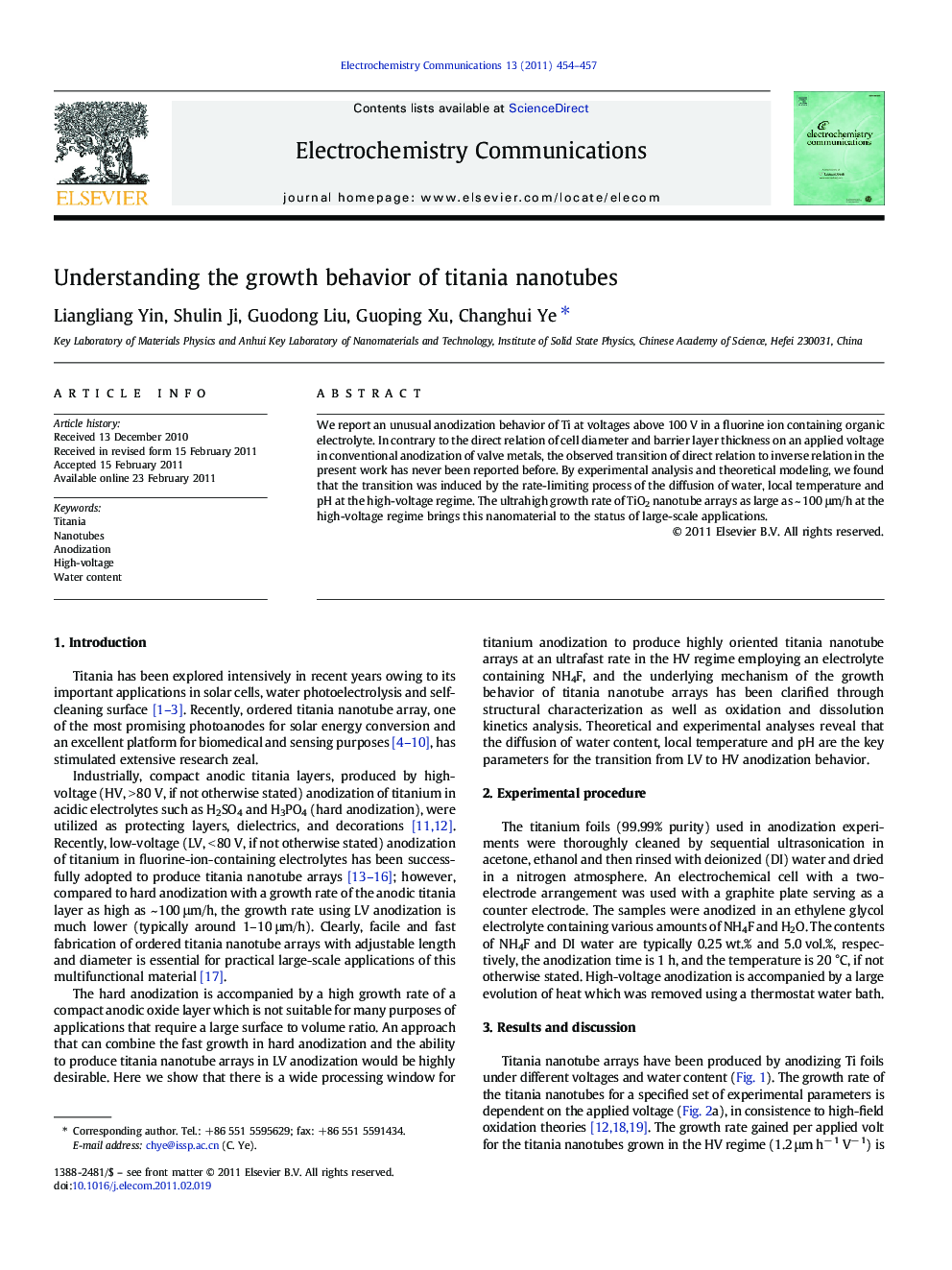| Article ID | Journal | Published Year | Pages | File Type |
|---|---|---|---|---|
| 180082 | Electrochemistry Communications | 2011 | 4 Pages |
We report an unusual anodization behavior of Ti at voltages above 100 V in a fluorine ion containing organic electrolyte. In contrary to the direct relation of cell diameter and barrier layer thickness on an applied voltage in conventional anodization of valve metals, the observed transition of direct relation to inverse relation in the present work has never been reported before. By experimental analysis and theoretical modeling, we found that the transition was induced by the rate-limiting process of the diffusion of water, local temperature and pH at the high-voltage regime. The ultrahigh growth rate of TiO2 nanotube arrays as large as ~ 100 μm/h at the high-voltage regime brings this nanomaterial to the status of large-scale applications.
Research Highlights► We report an unusual anodization behavior of Ti in an organic electrolyte. ► The cell diameter changes to inverse relation at a voltage close to 150 V. ► The transition is induced by the rate-limiting process of the diffusion of water. ► The growth rate of TiO2 nanotube arrays could reach ~100 micrometer/h. ► This new anodization mechanism is expected to be applicable to other valve metals.
